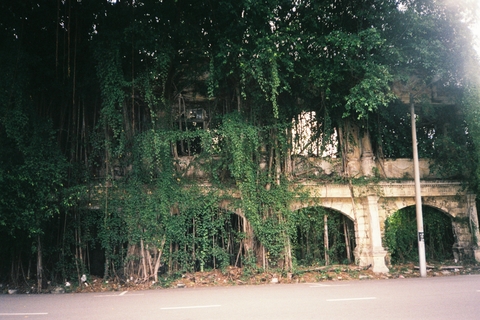HISTORY

Old building at Batu Pahat. This building Is age around 50 years old
According to local lore, Batu Pahat or chiselled rock in Malay has a history that goes back to 1546, when the invading Siamese troops were digging for fresh water in the village of Kampung Minyak Beku during their siege of Portuguese held Malacca.
Whether true or not, there is evidence that, prior to the Hindu Java-based Majapahit empire which controlled the Peninsula in the 14th century, the Siamese kings had brought most of the Peninsula under their control so that there could have been some initial Siamese contestation to the Portuguese conquest of Malacca.
Another version places the town’s beginnings to an even earlier period of a failed Siamese attack on Malacca during the reign of Sultan Muzaffar Shah who ruled from 1446 to 1459. After capturing Melaka, the Portuguese built the “A Famosa” fortress of granite rocks taken from the mouth of Sungai Batu Pahat. The town thus may have acquired its name from the quarries near the estuary.
Also known for its salted fish in the past, Batu Pahat was formerly also known as Bandar Penggaram, which means town of salt-makers. Despite its early beginnings, Batu Pahat did not take off until 1893 when Dato’ Muhamad Salleh bin Perang aka Dato’ Bentara Luar with the approval of Sultan Abu Bakar initiated the establishment of the new township.
As Government commissioner, Dato Bentara Luar was involved in the development of both Muar (also known as Bandar Maharani) and Batu Pahat. Amongst other achievements he is credited with managing gambir and black pepper plantations and successfully drawing a complete map of Johor state which show the roads and towns planned for development during his tenure.
What was also remarkable was his ability to converse in Chinese and his knowledge of Chinese culture. He is said to have accompanied the Sultan on a visit to China and was also close to the Chinese business community and the settlers attracted to the town and its surrounding areas.
Batu Pahat owed its present development initially to the growth of the agricultural sector and small and medium industries such as textiles, garments, and electronics. In 2001 Batu Pahat was upgraded towards present town status (Majlis Perbandaran) with Muar, Kluang, and Skudai.
In some ways, the town can be regarded as one of the best examples of Malay-Chinese cooperation in the urban history of the country. The first Malay dragon dance troupe in Malaya was formed in Batu Pahat. Two other newsworthy items are associated with Batu Pahat. The first relates to a legend with the town recognized as the home of Puteri Gunung Banang, a family member of the traditional fable Puteri Gunung Ledang.
The second is the tragic incident in October 1980 when Batu Pahat police killed eight members of a mob led by cult leader, Ahmad Nasir Ismail, who claimed to be the Imam Mahadi, a messiah. The mob stormed the police headquarters in Batu Pahat, injuring 14 policemen and 9 civilians. The self-styled Mahadi was among those killed.